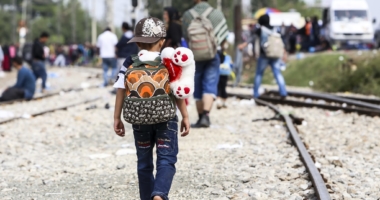Learning from the LGBTQ+ Community
Every June, corporations, organizations, schools, and even the White House make bold rainbow-filled statements about and gestures toward the LGBTQ+ community. But too often, these words ring hollow — unmatched by action and genuine belief. Young people are watching — and taking notes.
July 14 is International Nonbinary People’s Day, which celebrates the individuals who do not conform to the gender binary and who broaden our understanding of gender fluidity. The LGBTQ+ community continues to evolve the English language to better allow for identity development and communication, like insisting on everyone using gender-affirming pronouns, and using they/them pronouns for most of those who don’t identify as either male or female. And it starts in school. “People have been using they/them pronouns since before modern times. And not all nonbinary people use they/them, since gender expression and gender identity does not equal pronouns,” explains Jaylen, a Black nonbinary eleventh grader.
According to the Human Rights Campaign, more than 250 anti-trans bills have been introduced in state legislatures across the nation, from bathroom bills to student athletics bans. These anti-LGBTQ+ policies send damaging messages to students that they don’t belong, that students shouldn’t practice empathy or other social-emotional skills when they see differences, and that exclusion is an option. There have also been cases of discrimination in teachers’ refusals to use the names and pronouns that trans people prefer to be identified by. These discriminatory policies and practices may also contribute to the disparities in discipline for LGBTQ+ students. According to a report by GLSEN, 56% of LGBTQ+ students experience discrimination at school, and these students are more likely to be disciplined than those who don’t experience discrimination. Furthermore, these challenges are exacerbated if queer students are Black, Latino, and Native, or are from families with low incomes. “People just want to be who they want to be. They just want to play sports or be able to go to the bathroom,” Jaylen says. “It’s really that simple.”
We have a chance to learn from the LGBTQ+ community to become better allies. To do so, we must start by addressing our own inherit biases: Do you use phrases like “man up”? Or address a group as “ladies and gentlemen”? These gendered phrases that could be considered exclusionary, offensive, and outdated. Does your school have a Gay Straight Alliance (GSA) group on campus? They are designed to be open to all. GLSEN has GSA and student resources available.
School climates can either have great or terrible impacts on the social-emotional well-being of students, depending on whether the adults in schools choose to create welcoming and supportive environments, or ones that discriminate or fail to meet the diverse needs of students. When adults build their own self-awareness, social awareness, and asset-based mindsets, they can make choices that meet the social-emotional needs of students, like ensuring nonbinary students have access to gender-neutral restrooms (or using faculty restrooms if unavailable); using the pronouns each student prefers; addressing bullying to protect LGBTQ+ students; and ensuring students can participate in athletics based on their gender identity. In turn, actions like these to create inclusive environments can support positive identity development, a sense of belonging and mattering, and a sense of agency.
And it models for all students the social-emotional skills that are critical for success in an increasingly diverse country. After a tumultuous year in which we not only experienced the COVID-19 pandemic, but also had a reckoning in racial and social justice, now is the time for adults to think about how they will welcome students back to in-person learning. The choices that adults in schools make this coming year will influence the social-emotional well-being of all students, so it behooves everyone to make a conscious decision to be inclusive every day.







